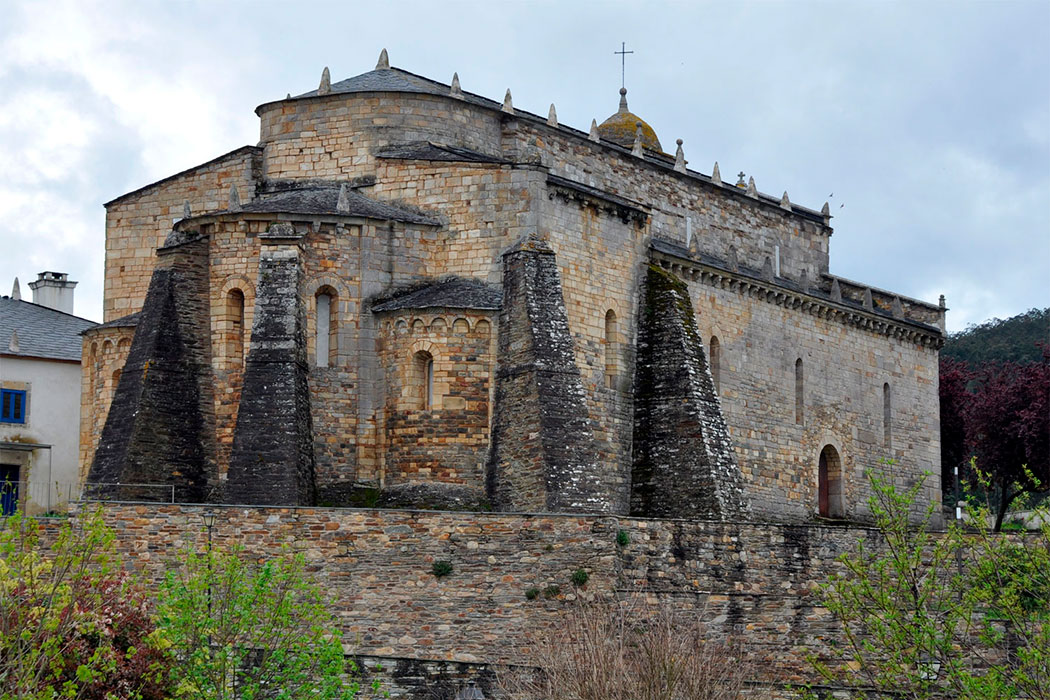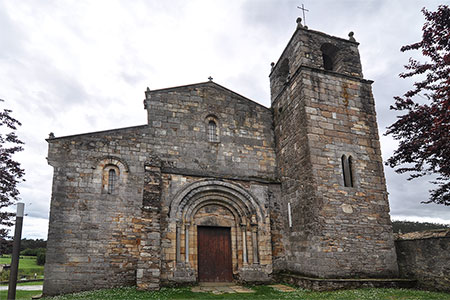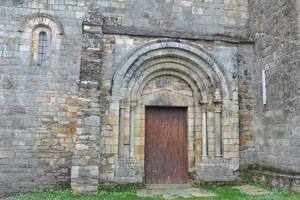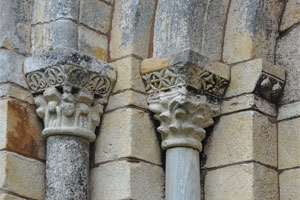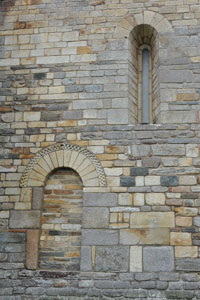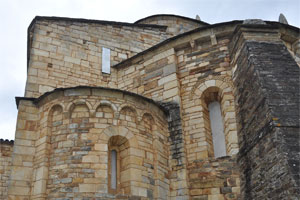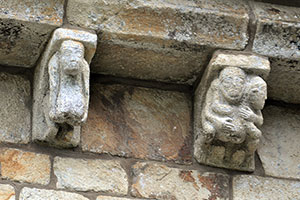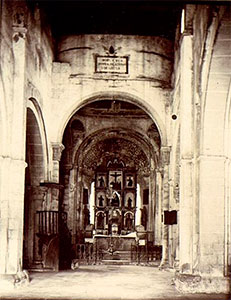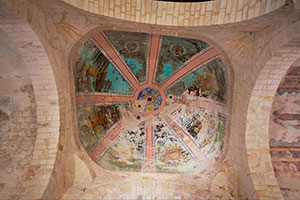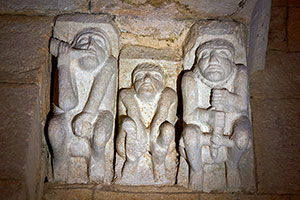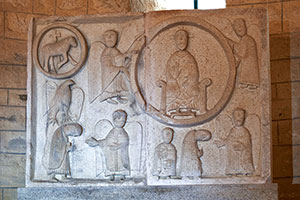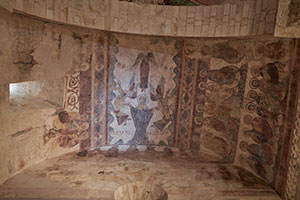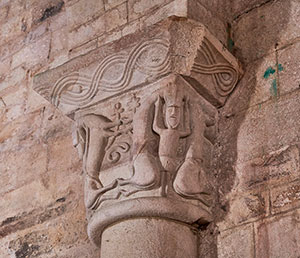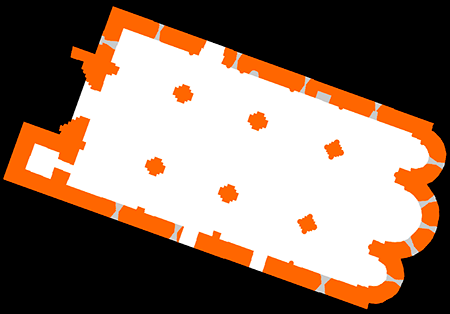Monastery of San Martiño de Mondoñedo
Basilica of San Martiño / San Martín / Monasteruim Maximi / Mindunieto
(Foz, Lugo)
The history of San Martiño de Mondoñedo runs parallel to that of the diocese of Mondoñedo (today Mondoñedo-Ferrol), whose origins are unclear and surrounded by legends and unverified stories. In this regard, it is worth mentioning the tradition according to which the first bishop was Zebedee, the father of James the Great and John the Evangelist.
In the 6th century, the diocese Britoniense is already mentioned, although its exact seat is not known with certainty. However, there is evidence that the Maximi monastery, which some authors have identified with this location, was within its territory. The Britons appear to have been a Christian people who arrived in these lands and developed an organisational system similar to that of a diocese, which eventually evolved into one this. The first known bishop was Mailoc, who took part in the second Council of Braga in 572. This diocese, which some scholars also locate in Bretoña, would have disappeared in 716 due to the Saracen invasion.
Around 866, Abbot and Bishop Sabaric arrived in the area from the monastery and diocese of Dume/Braga, having been forced to move the monastery and episcopal see to safer territory. The chosen location was Mindunieto, which suggests that the Maximi monastery was located there. The monastery continued to develop in this new settlement under the direction of an abbot-bishop, becoming the center of a diocese that heir of Dume and, indirectly, Bretoña, which had been lost.
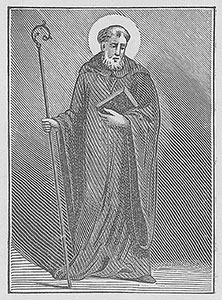
Illustration of a gosos
Biblioteca Nacional de España
One of the most notable figures in the monastery was Saint Rudesind (Rosendo, 907–977), who served as bishop between 925 and 947. He is credited with the construction of a large cathedral church in San Martiño de Mondoñedo and with maintaining significant activity in the development of the monastic houses in his diocese. Notably, he also participated in the foundation of San Salvador de Celanova. This monastery was the seat of the diocese until 1113, when it was decided to move it to Villamayor del Valle de Brea, now Mondoñedo, a move confirmed by Queen Urraca in 1117.
Since 1957, the diocese has been known as Mondoñedo-Ferrol. After the transfer of the diocese, San Martiño continued its monastic activities, but from 1156 it functioned as a regular canonical monastery linked to the cathedral of Mondoñedo. This activity continued until its suppression in 1534. The church of San Martiño de Mondoñedo is an essentially Romanesque structure with three naves, built during the last quarter of the 11th century and the early 12th century over an earlier, simpler church, possibly that of Abbot Rosendo.
- BESTEIRO, Blanca (2009). As pinturas murais da Catedral de san Martiño de Mondoñedo. Foz. (Lugo). Estudios Mindonienses, 25
- CAL PARDO, Enrique (2007). Breve historia de la diócesis de Mondoñedo. Rudesindus miscelánea de arte e cultura. Núm. 1. Mondoñedo
- CARRIEDO TEJEDO, Manuel (2007). XI centenario de San Rosendo (907-2007) patrono de Mondoñedo-Ferrol y "símbolo de Galicia". Rudesindus, núm. 1
- CASTIÑEIRAS, Manuel A. (2011). Apostillas al "Iter picturae sancti Iacobi" las pinturas murales de San Martiño de Mondoñedo, el "scriptorium" compostelano y el tesorero Bernardo. Compostellanum, vol. 56
- FLOREZ, Henrique (1789). España Sagrada. Vol. 18. De las Iglesias Britoniense y Dumiense. Madrid: Pedro Marín
- FREIRE CAMANIEL, José (1998). El monacato gallego en la Alta Edad Media. La Coruña: Fund. Pedro Barrié de la Maza
- IRAZU RIVEIRA, Ramón (2010). San Martiño de Mondoñedo: de la singularidad del enclave a la prodigiosa arquitectura. Rudesindus miscelánea de arte e cultura. Núm. 6. Mondoñedo
- LÓPEZ FERREIRO, Antonio (1907). Biografía de San Rosendo. Mondoñedo: H. Mancebo
- PÉREZ LÓPEZ, Segundo L. (2006). San Rosendo e Mondoñedo. Razóns para un centenario (907-2007). Estudios mindonienses, núm. 22
- PÉREZ RODRÍGUEZ, Francisco Javier (2008). Mosteiros de Galicia na Idade Media. Ourense: Diputación Provincial de Ourense
- RODRÍGUEZ DÍAZ, José Mª (2010). La sede episcopal de los britones. Rudesindus miscelánea de arte e cultura. Núm. 6. Mondoñedo
- SÁNCHEZ-PARDO, José Carlos i altres (2018). Arqueología y arquitectura de San Martiño de Mondoñedo (Foz, Lugo). Revisión crítica y nuevas aportaciones. Quintana
- VILLA-AMIL Y CASTRO, José; i altres (2009). La Catedral de Mondoñedo, su historia y descripción, sus pinturas murales, accesorios, mobiliario, bronces y orfebrería, vestiduras y ropas sagradas. Estudios mindonienses, núm. 25
- YZQUIERDO PERRIN, Ramón (1994). De Arte et Architectura: San Martín de Mondoñedo. Lugo: Diputación Provincial
- YZQUIERDO PERRÍN, Ramón (2000). Las catedrales de la diócesis de Mondoñedo en la Edad Media. El legado cultural de la iglesia mindoniense
